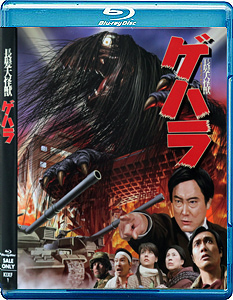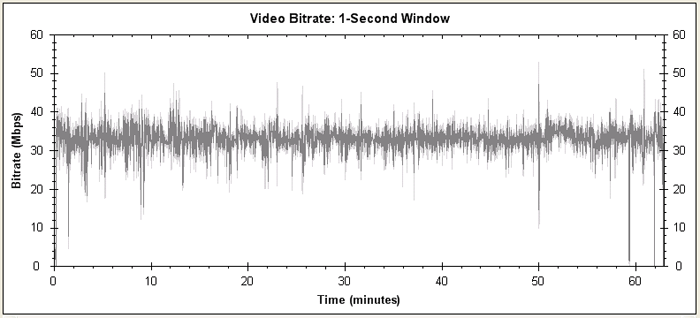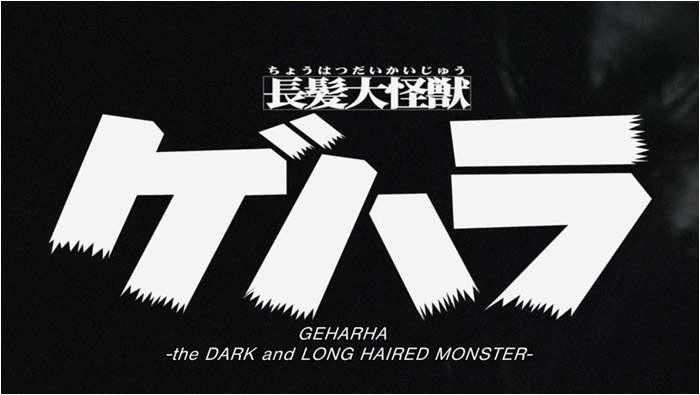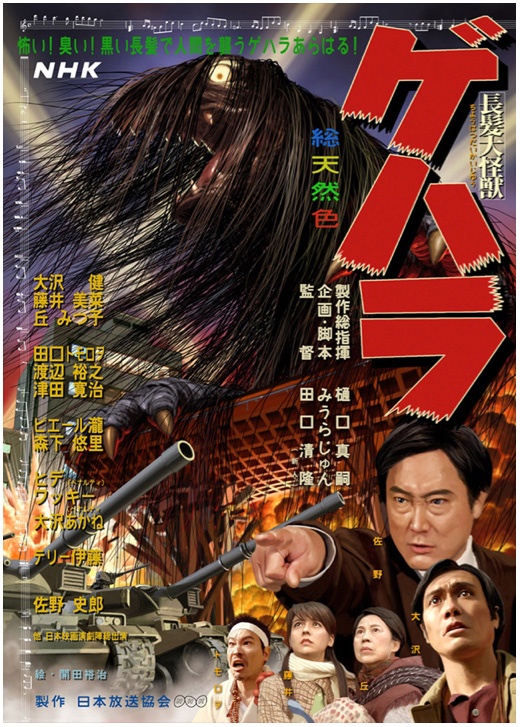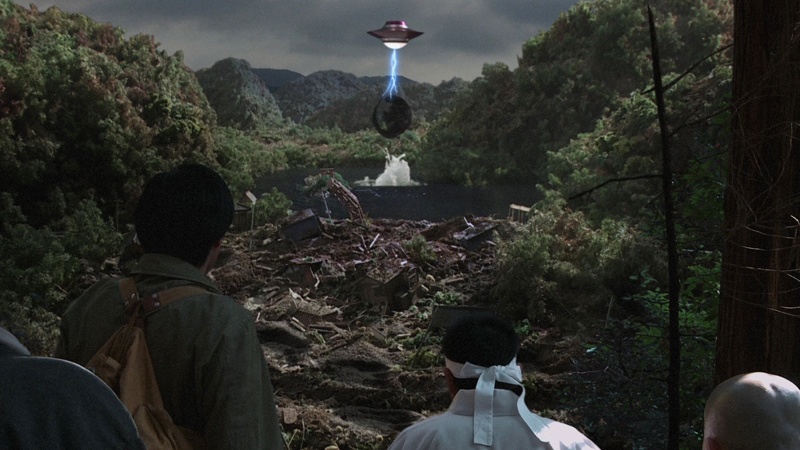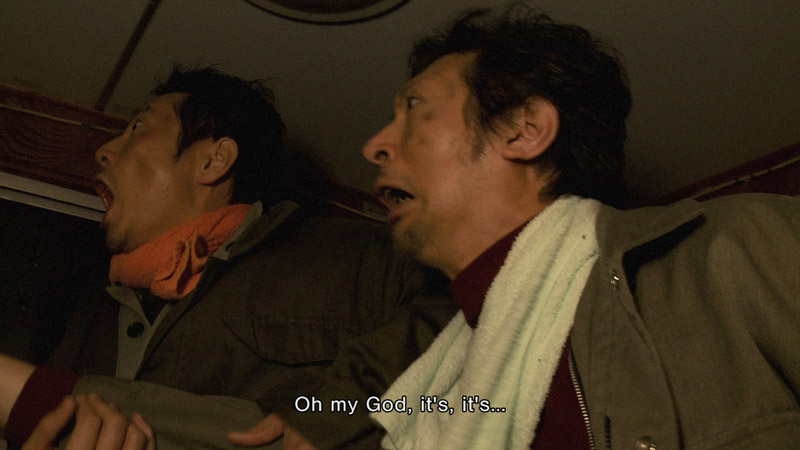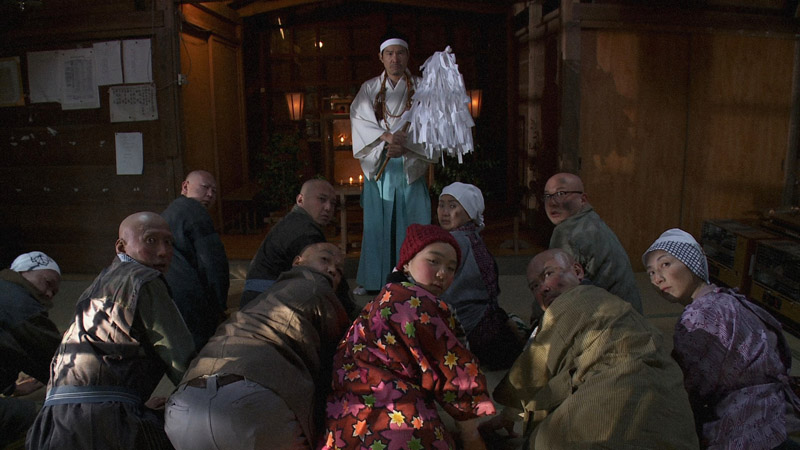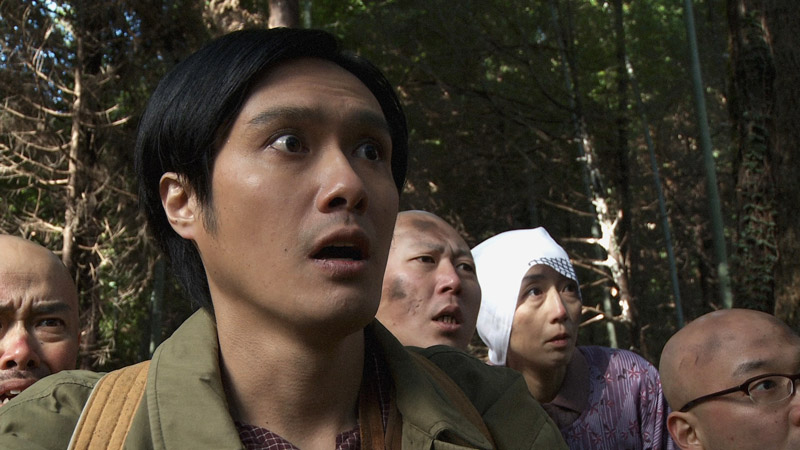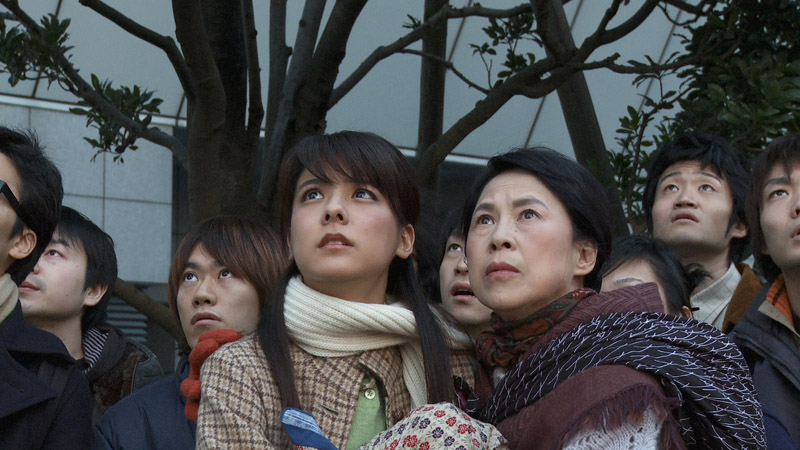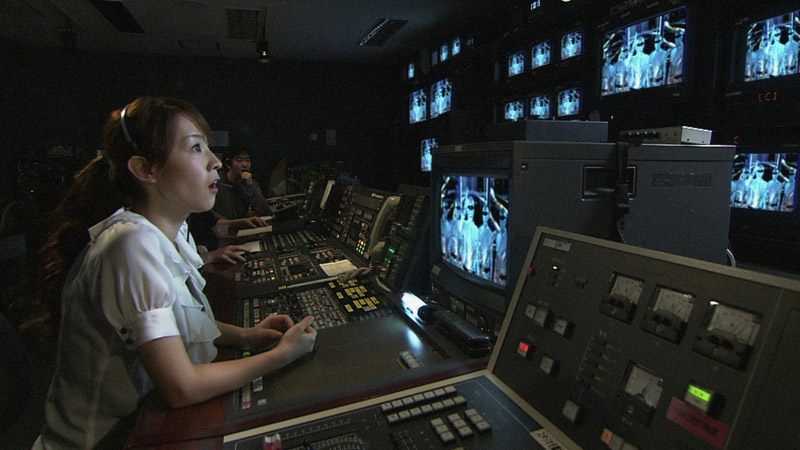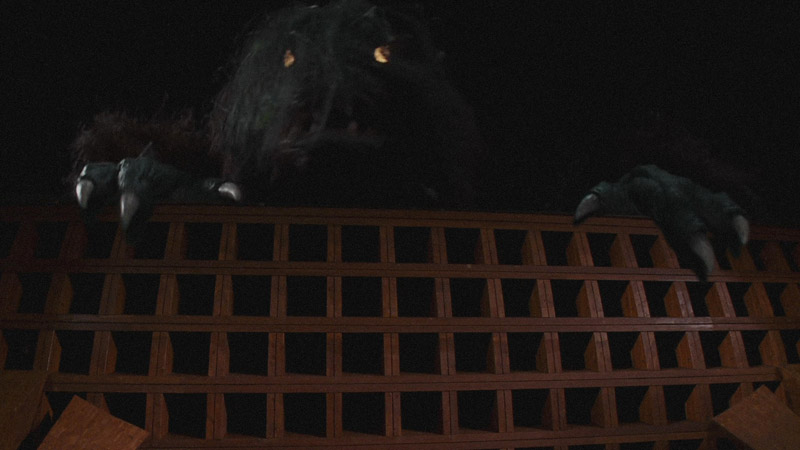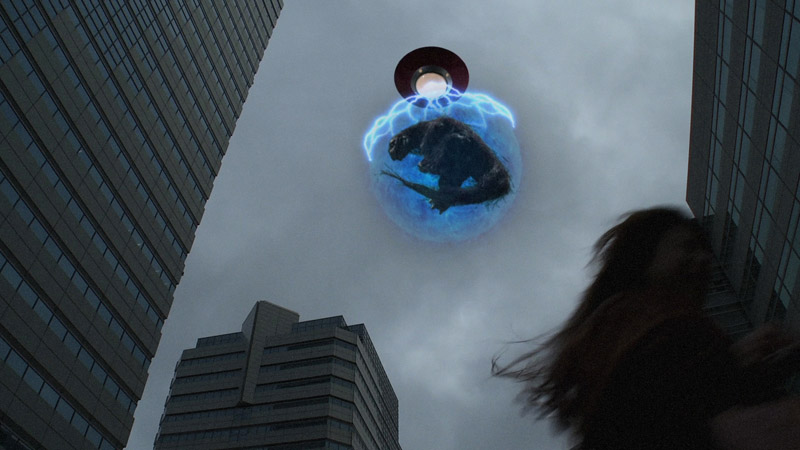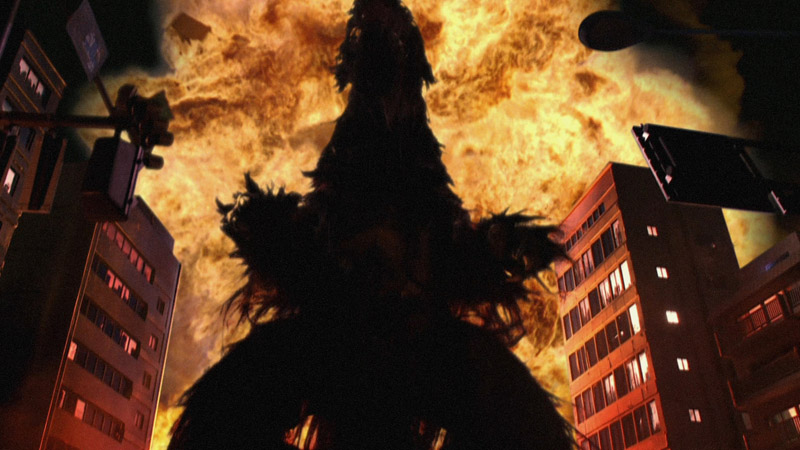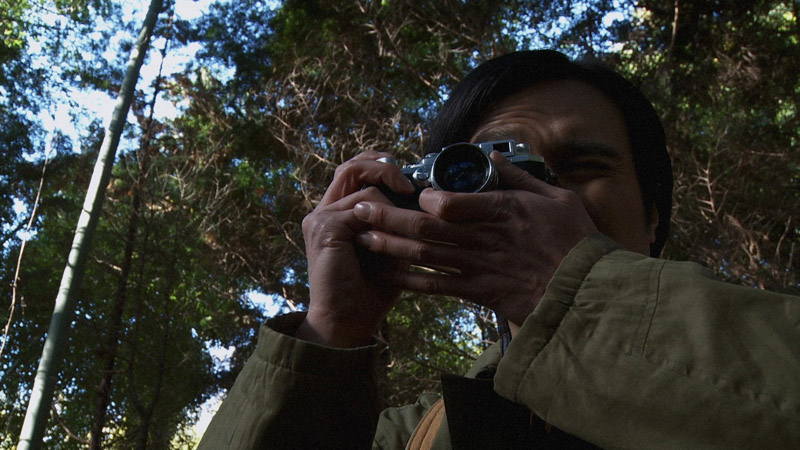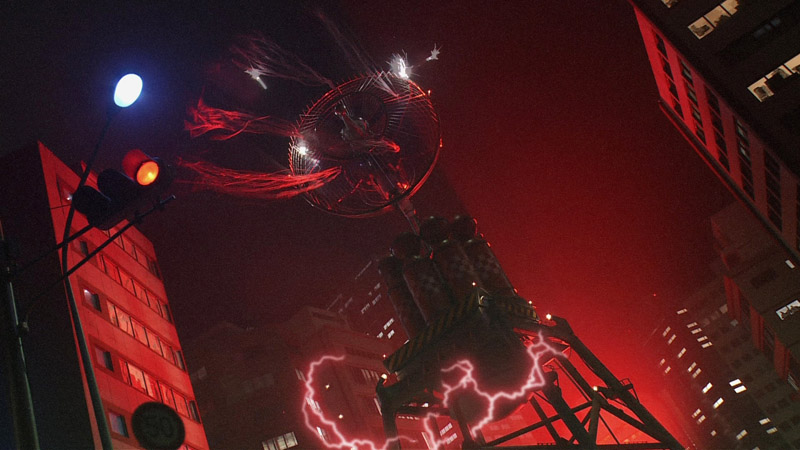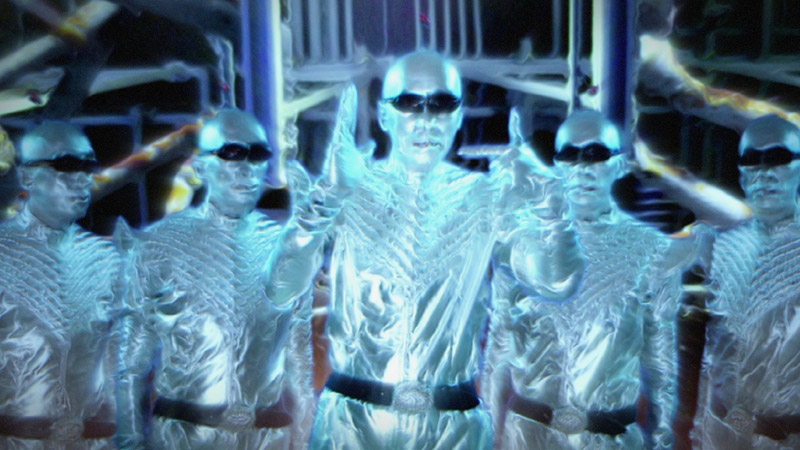Review by Leonard Norwitz
Studio:
Theatrical: Nippon Hoso Kyokai (NHK)
Blu-ray: NHK
Disc:
Region: FREE!
(as verified by the
Momitsu region FREE Blu-ray player)
Runtime: 0:20:20.677
Disc Size: 37,136,223,352 bytes
Feature Size: 6,565,189,632 bytes
Video Bitrate: 34.85 Mbps
Chapters: 32
Case: Standard Blu-ray case
Release date: September 30th, 2009
Video:
Aspect ratio: 1.85:1
Resolution: 1080p / 23.976 fps
Video codec: MPEG-4 AVC Video
Audio:
DTS-HD Master Audio Japanese 2135 kbps 5.1 / 48 kHz / 2135
kbps / 16-bit (DTS Core: 5.1 / 48 kHz / 1509 kbps / 16-bit)
Dolby TrueHD Audio Japanese 1587 kbps 5.1 / 48 kHz / 1587
kbps / 16-bit (AC3 Core: 5.1 / 48 kHz / 640 kbps)
Dolby Digital Audio Japanese 640 kbps 2.0 / 48 kHz / 640
kbps
Subtitles:
English, none
Extras:
• Making Of – in HD (62:50)
• Papooo!'s Monster Movie Geharha Special – in HD (48:25)
• Audio Commentary with Writer Jun Miura, Project Supervisor
Shinji Higuchi and Director Kiyotaka Taguchi
• Trailer - in HD (1:04)
The Film:
6
I have to say this one of the strangest Blu-rays that has
come across my desk. For starters, Geharha (the
title, by the way, does not appear in English anywhere on
the cover) has to be one of the most expensive per minute of
feature film in this format in existence. The entire feature
runs about 19 minutes. As of this writing YesAsia’s price of
$54.99 makes that about $3.20 per minute. Perhaps more
peculiar is that the Making-Of documentary is three times
longer than the feature film. The feature, including its
coming attractions and credits, has 32 chapter stops. That’s
one about every 40 seconds. Want more: The feature is merely
the proposed first in a series of episodes.
And what, pray tell, is this movie that demands such a high
premium? Geharha is an honest-to-God Japanese monster
movie in the best tradition of the mid-20th century. It's
funny and scary in a campy sort of way, with special effects
just barely this side of 1960. The monster itself, a huge
shaggy gopher-like creature with two small eyes that looks
simultaneously menacing and frightened, is a hoot. When was
this movie originally made, you ask? 2009! Only in Japan!
In researching Geharha, I came across this
description at scfijapan that summarizes the story and the
context, so here are a few excerpts, with a link to the
whole text:
"GEHARHA is an affectionate tribute to the classic
Toho monster movies of the 1950s and 60s that liberally
mixes comedy and daikaiju action. A fishing boat is attacked
at sea by a gigantic, hairy monster. After examining the
sole survivor (Kanji Tsuda from GAMERA THE BRAVE) . . .
scientific adviser Dr Murakami (Shiro Sano, GODZILLA 2000)
suspects the culprit is a “Keukegen spectre”, a shaggy
supernatural beast from Japanese folklore. The announcement
leads reporter Hideo Akihara (Ken Osawa, SAMURAI FICTION)
to a forest shrine dedicated to the Keukegen Geharha, where
he finds several worshipers and learns that an ancient seal
containing the monster has been broken.
Geharha strikes a number of locations in Ishikawa
Prefecture. . . Civilians are evacuated. . . Armed forces
attack with tanks and guns. . . And just when all seems
lost, a foreign consultant (Mark Chimery) offers a new
superweapon to use against Geharh. . . the Gas Vortical
Device “Fujin”. The short movie ends with an extended
preview for the “next” installment; GEHARHA: MONSTER
MARTIAL LAW."
Excerpt of review from scifijapan.com located HERE
The creative team behind Geharha are people with a long list
of credentials that include work on the anime Neon Genesis
Evangelion, the Gamera Trilogy, the Sinking of Japan, 20th
Century Boys, The Grudge 2, Godzilla 2000 & Godzilla: Final
Wars and Rebirth of Mothra 3.
A comment about the timing of this feature: You will see
references to a 21-minute "Director's Cut." The episode on
this cut is only about 16:30 minutes, and is seamlessly
followed by 1:40 minutes of coming attractions advertising
Geharha Martial Law and finally another 2 minutes or so of
credits, totaling 20:20. It s entirely possibly that this is
the "director's cut" and that it includes both coming
attractions and credits.
Image:
9/9
NOTE:
The below
Blu-ray
captures were taken directly from the
Blu-ray
disc.
The first number indicates a relative level of excellence
compared to other Blu-ray video discs on a ten-point scale.
The second number places this image along the full range of
DVD and Blu-ray discs.
Whatever genre Gerharha is an homage to, the filmmakers have
tread a narrow line between old-school production and new
techniques. Depending on the situation, Geharha's color,
depth of field, focus and contrast look very present day –
often sharp as the proverbial tack. In the darker scenes,
there appears to be a kind of color noise in out of focus
backgrounds. Curiously, this "noise" completely disappears
on projection, so if it there, it is readily dispatched. I
found no other transfer issues such as edge enhancement,
banding, or DNR. Blacks are solid, and there's plenty of
detail preserved in bright areas where expected. On the
other hand, the monster itself is clothed in shadow and we
can only fleetingly make him out, though we can discern a
tear at the appropriate moment. With today's technology we
could remove any trace of wires or clumsy front projection,
we could even generate him entirely in the CG domain - so
the only reason to keep Geharha in the dark, so to speak, is
that it's tradition – all the funnier, given the advances in
technology.
N.B.: an aside re my screen captures, which are taken
directly from the Blu-ray and offered with only enough
processing to get them into a viewable format. I have
included a shot I pulled off an on-line review of the DVD.
There is no testament as to how this shot was derived, but
the difference in brightness, color and contrast is nothing
short of jaw-dropping: the DVD cap looking like an artful
rendering of the frame for a poster ad. Even though I
haven't seen the DVD, given that it is sourced from the same
elements and produced by the same people as the Blu-ray I
would be very surprised if the DVD didn't look a great deal
like the Blu-ray cap, with less res and detail.
CLICK EACH
BLU-RAY
CAPTURE TO SEE ALL IMAGES IN FULL 1920X1080 RESOLUTION
DVD TOP vs. Blu-ray
BOTTOM
Audio & Music:
8/6
I have no reason to believe that the audio isn't faithful to
the theatrical intentions. It has a front-directed
preponderance of information that opens up into correctly
positioned surrounds when needed: from the subtle chirping
of forest birds and the howling of the wind, to village
drums, monstrous squashing of buildings, glass shattering
and the explosions of tank canons. Dialogue is clear, crisp
and nicely sized and placed.
Operations:
6
The menu is entirely in Japanese, but easy enough to sort
out for those who don't read the language. What with 32
chapters, there are only a handful of thumbnails appearing
at any one time. The English translation is idiomatic and
contains scarcely any spelling or usage errors – in this it
is decidedly different from the monster movies of
yesteryear.
Extras:
6
Unfortunately the audio commentary, accessible from the
audio options menu or the remote, is in Japanese for which
there are no English subtitles, as there are not for any of
the extra features. Even so, I found the making-of feature
to be more or less self-guiding as we follow the crew from
scene to scene, seeing how they set them up, place the
actors, and sort out how Geharha will be framed. The
interviews from the TV show Papooo! are a kick even
without knowing what they are saying. Americans couldn't get
away with that degree of hysteria – which is really saying
something. Everything on the Bonus list is in clear HD.
|
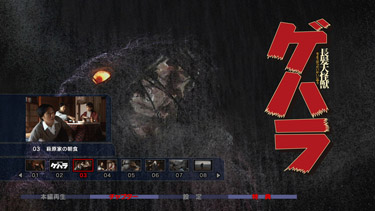 |
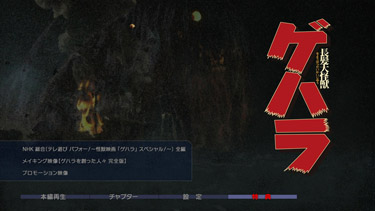 |
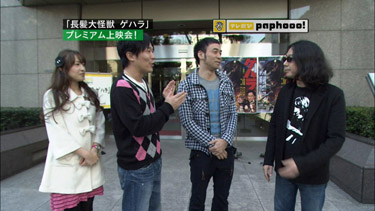 |
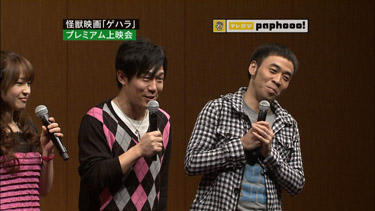 |
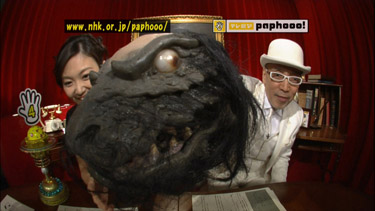 |
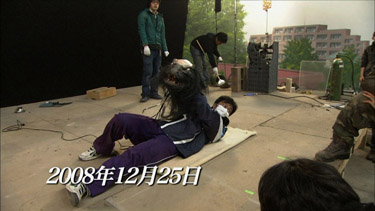 |
Bottom line:
7
I should mention that the poster is misleading in that
Geharha is shown with a glistening hairdo, clearly
separating his strands of hair. This doesn't happen in the
movie. Image quality is very good and audio is respectable.
I shouldn't be surprised if this Blu-ray doesn't become
something of a cult favorite and, in the states, a
collector's item. It is definitely a popcorn and sake movie
to be enjoyed with or without subtitles.
Leonard Norwitz
February 27th, 2010
![]()
![]()

![]()
![]()
![]()
![]()

![]()
![]()

